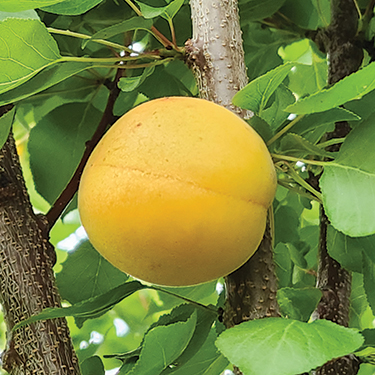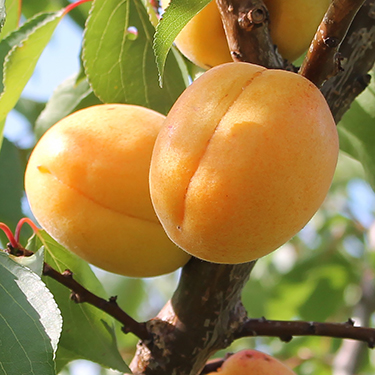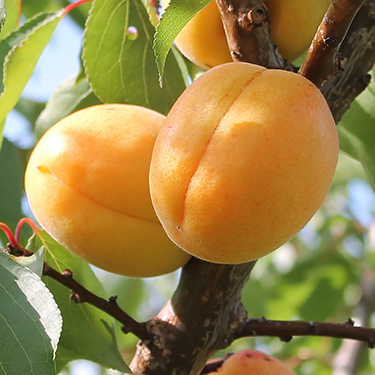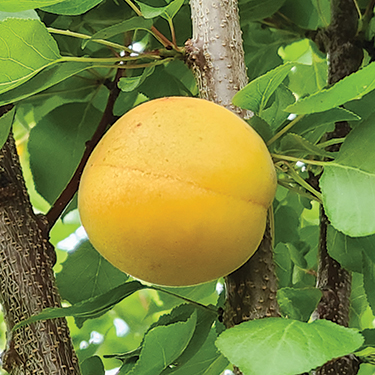Apricot : HOYT MONTROSE Semi-Dwarf (Mustang)
$65.95
The original Montrose apricot was discovered at Montrose, Colorado. It is a hardy, frost resistant variety that we sold for a number of years. Hoyt Montrose, which we are now making available, is a seedling of the original. This one is from northern Idaho. Unlike the original, it is not a sweet pit type, and fruit size is much better at 4-5cm (1 ½ -2"). The sweet, juicy yellow flesh of Hoyt Montrose gets good reviews on flavour, texture, and quality. The tree is vigorous and precocious. In addition, some folks in marginal areas have had better success setting fruit with this variety than any other, due to the late, prolonged bloom time.
SELF -FERTILE | ZONE 4 | HARVEST: EARLY AUG.
Only logged in customers who have purchased this product may leave a review.
Growing Tips
One of the key factors that determines cold-hardiness for tender fruit trees such as apricots and peaches is how well they harden off in the fall. Any activity that stimulates growth should be avoided after August 1. This includes fertilizing, overly frequent watering and pruning.






Reviews
There are no reviews yet.